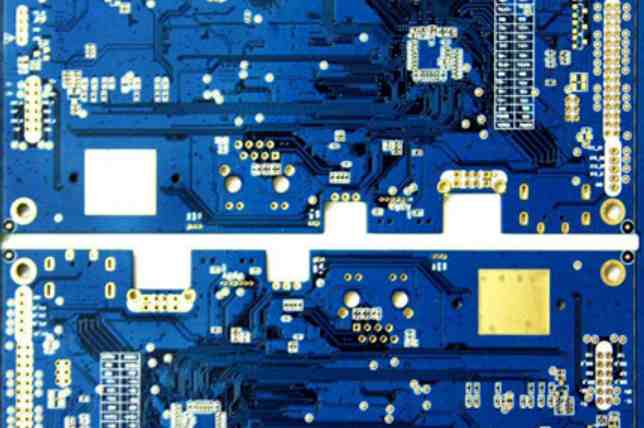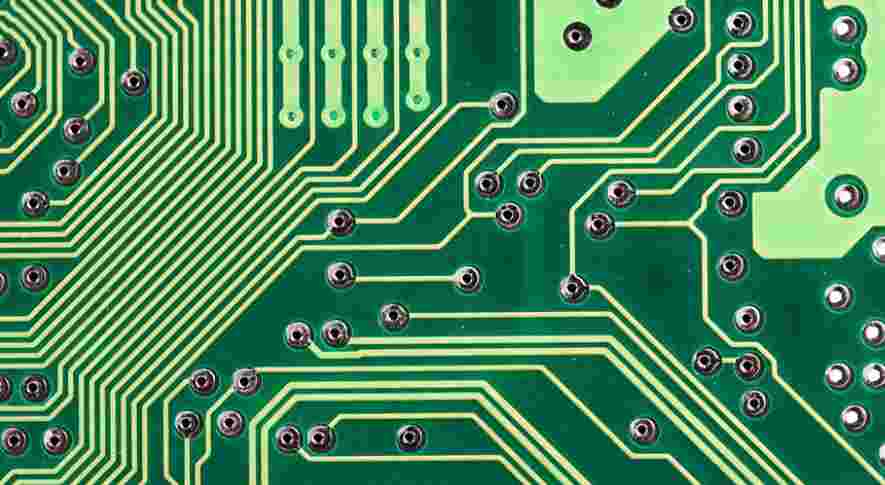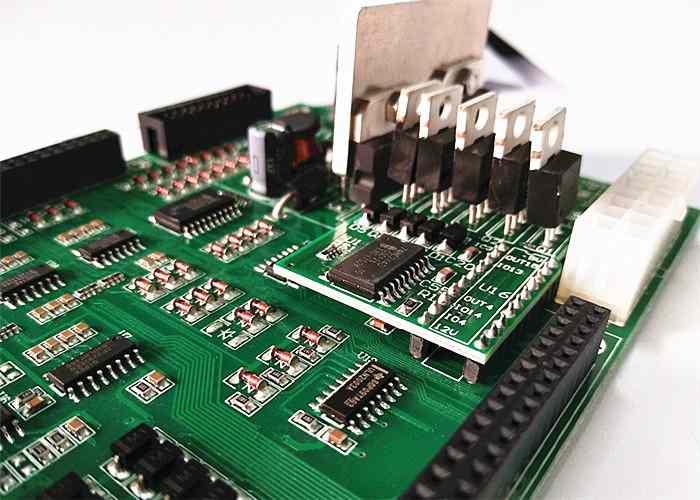
PCB board distortion is a possible problem in the mass production of PCBA, which will bring considerable impact on the patch and test, so this problem should be avoided in the production.
Changkeshun technical engineers analyzed the reasons for PCB distortion as follows:
1, PCB itself raw materials selection is improper, such as low T of PCB, especially paper-based PCB, its processing temperature is too high, PCB becomes bent;
2. Unreasonable PCB design, uneven distribution of components will cause excessive thermal stress of PCB, larger connectors and sockets will also affect the expansion and contraction of PCB, resulting in permanent distortion;
3. PCB design problems, such as double-sided PCB, if the copper foil on one side is too large, such as the ground wire, and the copper foil on the other side is too little, it will cause uneven shrinkage and deformation on both sides;
4. Improper use of fixture or fixture distance is too small, such as wave soldering finger claw clamping too tight, PCB will expand and deformation due to welding temperature;
5. Excessive temperature in reflow welding will also cause PCB distortion.
In view of the above reasons, the engineer proposed corresponding solutions:
1. If price and space permit, select PCB with high Tg or increase PCB thickness to obtain the best aspect ratio;
2, reasonable design of PCB, double-sided steel foil area should be balanced, in the place without circuit covered with copper layer, and in the form of grid, to increase the stiffness of PCB;
3. Pre-bake PCB before the patch, and the condition is 125℃/4h;
4, adjust the fixture or clamping distance, to ensure the PCB heat expansion space;
5, welding process temperature as low as possible; Mild distortion has occurred, can be placed in the positioning fixture, temperature reset, in order to release the stress, generally satisfactory results.

PCB circuit board Chemistry Laboratory
1. Acid Number(Acid Value)
Refers to the amount of free acid contained in 1 gram of grease, wax or flux. The measurement method is to dissolve the sample in hot alcohol with titanium phenol as an indicator, titration required potassium hydroxide milligram number, namely its acid value.
2. Baume
Is an English system of liquid specific gravity notation, is to commemorate the French chemist Antoine Baume and his surname for the specific gravity unit of liquid substances, its conversion with the metric specific gravity is as follows :● 4℃ pure water density as 1g/cm; The ratio of all other substances of the same volume to this "pure water" is the specific gravity of the metric system (Sp.Gr.; Specific Gravity). ● Where liquid is heavier than water, its Be value is: Be=145-(145÷SP.Gr.)● Where liquid is lighter than water, its Be value is: BE=140÷(sp.gr.-130)
3. Desiccator dryer
It is a kind of thick glassware with a dense seal to isolate the air. Desiccant (such as calcium chloride or silica gel granules, etc.) can be placed inside the bottom, so that the articles placed inside can keep dry.
4, Mole, mole, mole
Referring to a unit of mass of matter. If the molecular weight of sulfuric acid is 98 grams, then 196 grams of sulfuric acid can be called 2 "moles" of sulfuric acid. If the gram atomic weight of carbon is 12 grams, then 36 grams of carbon can be called 3" moles "of carbon. The molar concentration refers to the number of moles of the substance contained in 1 litre of water solution. For example, 1 molar concentration of sulfuric acid is 98 grams of pure sulfuric acid per litre of acid solution.
5, Normal ConcentraTIon(Strength), normal concentration (strength)
Is a representation of the concentration of an aqueous solution, with N as the symbol, commonly used in the field of chemistry. The gram molecular weight or gram atomic weight of a substance divided by its valence number gives the gram equivalent. For example, the molecular weight of sulfuric acid is 98 grams, the root valence is 2, so its gram equivalent is 49 grams. The gram atomic weight of copper is 63.54 grams and the valence number is 2, so its gram equivalent is 31.77 grams. Where 1 liter water solution contains 49 grams of pure sulfuric acid, known as 1N concentration of sulfuric acid (in terms of 2 acid, its molar concentration is 2 times the equivalent concentration, that is, 1M=2N, so 1N sulfuric acid is equal to 0.5M sulfuric acid). The equivalent concentration of 31.77 grams of copper ions in 1 litre of water solution is also 1N. The pH Value is an artificial representation of the pH of an aqueous solution. The correct notation is small p and large H written together. The correct definition of this word is: the reciprocal of hydrogen ion concentration in water (represented by [H]) (1 / [H]), and then calculate its logarithm (log 1 / [H]), that is, the pH value. For example, if the concentration of hydrogen ion in an aqueous solution is 1/10,000(abbreviated as 10-5), its reciprocal should be 105, and then the logarithmic value log105, pH = 5 is obtained. It's a simplified numerical way of expressing abstract ideas. The pH range from 0 to 7 is acidic, and the lower the number, the stronger the acidity. The pH range from 7 to 14 is basic, and the higher the number, the stronger the alkalinity. If this pH value is expressed in mathematical formula, it is: pH = log1 / [H], which is completely an artificial formula, not a mathematical truth.
6. QualitaTIve Analysis
Chemical analysis to determine the nature of the "components" contained in a material, which can be used by traditional hand manipulation or instrumental analysis to find out what the elements are composed of.
7. QuanTITIve Analysis
A chemical analysis of the content of various components in a material to find out what weight each component has.
It is a simple manual chemical analysis method of titration with solution, which is the most commonly used method in chemistry laboratory. Be' Baume' ; Bomeness (British specific gravity)MW Molecule Weight; Ph Acidity or Alkalinity of Aqueous Solntion; The pH value of aqueous solution (note that this symbol must be written as small p and large H, but it is wrong)Sp Gr. Specific Gravity; Specific gravity.







